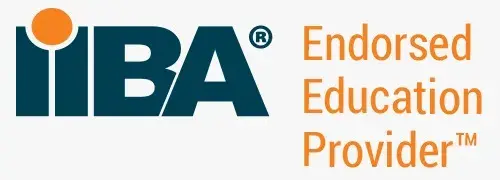Are you going to appear for the business analyst interview? If yes, then you should be ready for scenario based and behavioral questions also. In a business analyst interview, scenario-based and logical questions are commonly asked to assess the candidate's ability to think critically and solve problems in a structured and analytical way.
These questions are designed to simulate real-world situations that the candidate may encounter in the role of a business analyst. By answering these questions, the interviewer can evaluate the candidate's communication skill and business analysis skill, among other things.
What are some scenario-based and logical questions that are asked in a Business Analyst interview? In this post, we will look at the top commonly asked scenario-based and behavioural questions. We will also provide answers/guidelines to a few questions, which will enable you to prepare answers for other similar questions.
Types of Business Analyst interview questions
As a business analyst, you will be asked variety of questions in the interview. What are these types, lets have a look:
Core business analysis skills
Core business analysis refers to the business analysis skills like requirements gathering, elicitation techniques, business analysis, UML modelling, Agile, user stories, SQL etc. Some examples are as follows:
- What is Functional Decomposition?
- What are Include & Extend Relationships between Use Cases?
- What are differences between Use cases and User stories
- What are the types of relationships between the use cases
- What is BRD? How is it different from SRS?
Scenario-based questions
These questions are asked to check your knowledge in a particular situation. They are mostly related to business analysis skills and would test your BA skills in a given situation. Some of the questions could be as follows:
- There are multiple stakeholders and are located at geographically diverse locations, which elicitation techniques would you be using?
- You are contracted to develop a software system involving multiple departments of an organization. The number of departments involved in this project is around 15. How will you go about planning the requirements elicitation, considering the project is being executed using waterfall methodology?
- Are you familiar with Process Modelling? If your customer is not familiar with either DFD or UML diagrams, will you still use process modelling? What would be your approach?
Behaviour / Problem-solving questions
This is becoming an integral part of every BA interview and most of our students have confirmed this trend. These questions are asked to check the following:
- How do you react to the unfamiliar situation (out of your comfort zone)?
- How do you approach a problem and how good is your Problem-solving ability?
There may not be a unique answer to these questions. The interviewer is looking to check your approach to solving the situation. Some of the questions could be as follows:
- What are some of the challenges a Business Analyst faces and what are the strategies to overcome those?
- Are you a team player? Give me an instance where you demonstrated your team player ability.
- Have you been a part of any project, which failed or closed without closure? What were your learnings?
Behavioural Questions for Business Analysts with answers
We are going to take up a few selected questions and will provide the answer. This should provide you the approach and the framework to answer any behavioural questions in the interviews.
1. What are some of the challenges a Business Analyst faces and what are the strategies to overcome those?
Business analysts interact with stakeholders of different types. These poses challenges for the business analyst as stakeholders are human beings and every human being is different, however the three most important and common challenges are-
i) Facing a difficult stakeholder - Stakeholders could be very difficult, negative or resistant to change. To manage these stakeholders, the best way is to find out the reason for that particular behavior and then create a stakeholder engagement and management strategy for each of these stakeholders because each of these stakeholders are different. There is no one rule for all the stakeholders but it depends on individual stakeholders and the best way is to create a strategy for each one of them who are important for the project.
ii) Not able to understand implicit requirements - There are a lot of situations where customers tend to tell you some information where they don't give you complete information not intentionally but because many a times as an individual if I am working on something,I tend to ignore that and feel that this is so common, why do I need to express it. These are the things which become implicit requirements. You need to find out those hidden and implicit requirements, otherwise, they may result in rework. The simplest way to find it is to on a continuous basis analyze the requirements, that is break down the requirements, ask follow-up questions and brainstorm with your team so that you can listen to different views and come up with all the questions or all the missing requirements.
iii) Frequently changing requirements - This is something which you cannot avoid because changes are so common in today's world. Everywhere situation is dynamic so new requirements keep on coming. So instead of trying to bind the customer into a contract that they can't make any changes, find out ways to handle the changes elegantly. So agile methodology allows you to handle the changes in a much more efficient manner.
2. Which has been your most challenging project and why?
In this question, the interviewer is trying to understand your approach in handling difficult situations. The challenge could be related to a highly demanding customer, negative customer, rapidly changing requirements, etc. Think hard, it is best to get an incidence from your own experience. Else you need to develop one.
You need to give an example to the interviewer. Here it is:
I was assigned to a project which was in the banking domain. The project was going to start in 15 days’ time. I was new to this domain and was really worried about the requirements phase. Interacting with the customer without having any clue about the banking domain could have led to many issues. So, I decided to do something about it.
I enrolled for a course in banking basics and went through the chapters diligently. Even though 15 days was not sufficient, but I focused on learning the vocabularies and the processes, relevant to my project. This preparation helped me in understanding the key concepts, terms as well as processes. It helped me in the requirements phase and in building a good rapport with the customer.
This was just one of the examples; you can choose any other if it demonstrates your success in overcoming the challenge. Typically, these challenges can be handled by maintaining a good relationship with stakeholders, proper prioritization of tasks, communication with stakeholder, or well project planning.
3. What is your biggest achievement and why do you think so?
Keep your answer strictly related to work. Techniques like STAR method (STAR stands for Situation, Task, Action, Result) can be used. Using this strategy is particularly helpful in response to competency-focused questions, which typically start out and tell a story about a recent work success that shows the interviewer what benefits you will bring to the company.
Example: “In my previous stint, I found a major issue with the inventory control system. The system was not keeping close enough tracks on the number of products in stock, and the company was short on the product each month. I was tasked to investigate the issue. I conducted a root cause analysis with the team. Initially, all of us thought that the stock maintenance was not happening correctly, but the tech and the testing team confirmed that that's not the case. So, I decided to look into the delivery of products. By investigating 12 months of data, I was able to identify the problem. It was happening because the returns were not captured correctly and that was causing the untimely shortage. So, we got that fixed and also put automated notifications systems based on re-order levels.”
This is one example but please note the detailing of the problem and the solution. You can pick up similar instances from your past. It does not need to be related to software alone, it could be any instance where you helped solve a problem.
4. Are you a team player? Give me an instance where you demonstrated your team player ability.
This question is about working in a team. You can narrate an instance where you and your colleagues worked together to achieve a difficult task which would not have been possible if you all did not contribute. Instances related to meeting delivery timelines are typically such scenarios. However, if you have been part of an actual instance nothing can be like it.
Else, you can refer to this example. Your team was working on a change request. The delivery timelines looked difficult to meet because of some issues. On top of that, one of the testers fell sick. Without a tester, meeting the deadline was impossible. So, you decided to participate in the testing to help the team. This way, your team was able to meet the deadline.
If you have worked in an agile environment, do mention that your project followed agile. One must be a team player in an agile environment for a project to be successful. This will give weight to your profile.
5. Have you been a part of any project, which failed or closed without closure? What were your learnings?
Yes, I have been a part of a project which was delayed and slightly over budget. The reasons were gaps in the requirements identified during the UAT stage.
Late identification of defects resulted in an extended UAT period delaying the project and stretching the budget.
We conducted root cause analysis to find out the reasons and we discovered the following:
** It was a credit rating application for an insurance company, and we did not have anyone in our team, who understood the domain well.
** On top of that, our team did not validate the requirements as it should have. We did have a presentation with screenshots but there were a lot of gaps with the flow representations. Possibly, we should have created a navigation enabled prototype.
These two learnings were also captured in the project learnings document.
6. How important is for BA to know the domain? Can BA be domain agnostic?
Domain knowledge for a business analyst is especially important as it enables them to perform his/her role more efficiently.
First, it helps in having a better understanding of the business requirements. Without understanding the business, it is difficult, for certain domains.
Secondly, having deep domain understanding also enables a BA in adding value to the business processes, by leveraging previous experiences and suggesting better ways to implement a process.
Having said that, not all projects require domain understanding.
7. You are contracted to develop a software system involving multiple departments of an organisation. The number of departments involved in this project is around 15. How will you go about planning the requirements elicitation, considering the project is being executed using waterfall methodology?
Question Objective: This is a scenario based question and is asked to check your understanding of various elicitation techniques and your ability to decide which one is suitable for a given situation.
Answer
In this situation, multiple departments are involved and each department will have at least one stakeholder. To elicit requirements for the entire project will require a lot of time. That’s a very time-efficient exercise. What can we do to become more efficient?
Obviously, having a 25 member team to conduct the elicitation will be an expensive exercise considering the travelling and logistics expenses.
So, what else can we do? In one of my projects, I faced a similar situation. I would like to share what we did in that particular case.
In that case, We created a small team by choosing members from the departments itself (who were IT enabled and understood processes). Each team was led by a process champion. Each department team was made responsible for interacting with other members of the team to gather requirements and document it. Of course, we conducted a small session to help them understand the formal documentation.
Once the process champions, completed their work, our team (of business analysts and process analysts ) sat with the process champions and their respective teams for knowledge transfer and review.
This technique helped us save a lot of time. The critical success factor for this approach are:
- Make sure that process champions understand software development process and the business processes
- Make sure that formal documentation format is finalised well in advance and communicated with all the teams
- The knowledge transfer and review meetings conducted at regular intervals to ensure better efficiency
So, this is the way, you can answer this question – Selecting the right Elicitation Technique in a given Scenario.
Conclusion
Scenario-based and logical questions are an important part of the business analyst interviews these days. STAR and similar frameworks provide the best approach to answer these types of questions.
We also help professionals prepare for interviews with one-on-one mock interviews. Experts share feedback in detail with the professionals to make them work on the shortcomings, if any.
If you want to enrol in such programs, please write to us at info@techcanvass.com.
About Techcanvass
Techcanvass is an Information Technology certifications training Organization for professionals. It offers internationally recognized certifications in the fields of Project Management and Business Analysis.
We offer IIBA Certification preparation courses, Domain Training courses, Business Analysis tools and techniques, Data Analytics Courses, and Agile Business Analysis courses.




